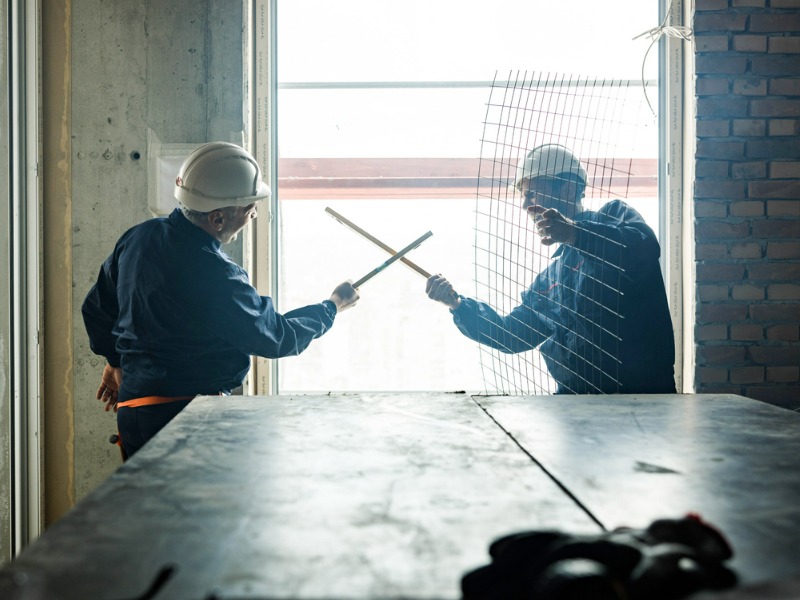How forensic engineers help resolve construction disputes

Canada’s construction sector, which accounts for 7.5% of the country’s GDP according to the Canadian Construction Association, is seeing a rise in construction claims and disputes.
That’s partially due to the increasing technical sophistication of construction projects, escalating price of construction materials, and an increasingly challenging delivery environment. In 2022, Canada’s P&C insurance market collected nearly $750 million in direct written premiums for surety bonds, according to the Office of the Superintendent of Financial Institutions. The bonds are designed to guarantee a contractor’s satisfactory completion of construction projects.
A 2021 report on dispute resolution from CRUX notes most construction disputes in Canada are caused by changes to the scope and terms of work during initial phases of construction. These often result in changes to the design and schedule.
The second major problem is unclear terms and conditions in the contract documents regarding allocation of risk to the contracting parties for unforeseen physical conditions.
Most construction contracts in Canada allocate risk of unforeseen subsurface conditions onto contractors. The risk can be minimized by conducting subsurface investigation, also known as soil testing. But contractors are reluctant to spend money upfront if they might not get the job, so they typically don’t conduct subsurface investigations before submitting bids.
Claims that cannot be resolved by negotiation at the project level become disputes, which are often adjudicated through court action or alternative dispute resolution processes such as arbitration or mediation.
Choice of venue
Regardless of the dispute-resolution process, a forensic engineer will often serve as an expert witness. Arbitrators, mediators or triers of fact rely on evidence and opinions from forensic engineers to better understand the dispute’s technical aspects.
An investigation carried out by the expert witness is similar for all three dispute-resolution mechanisms. Information from the investigation must be detailed enough for a forensic engineer to determine likely causes and contributing factors, and to formulate supported professional opinions.
It starts with background information collection, which includes a forensic engineer’s review of correspondence directly between the parties or exchanged by their respective counsel, and the statements of claim and defence. This helps clarify the dispute’s general nature and the parties’ positions.
Data gathering
How much information forensic investigators gather depends on the matter at hand.
For example, a forensic investigation into an incident involving the failure of a tower crane at a construction site requires information on the crane’s design, fabrication, installation, operation and maintenance. It also requires data on the site conditions and safety protocols that were in place when the incident happened.
A forensic engineer will visit the site to view conditions and investigate the incident, which may be time sensitive. In the tower crane failure example, this may include immediately photographing, measuring and documenting the condition of the equipment and site. It may also require interviewing site personnel and extracting material samples from the failed equipment for laboratory examination.
Although the forensic investigation is independent, the resulting reports differ based on the dispute-resolution method chosen by the parties. For example, a mediation report isn’t subject to the same level of scrutiny as a report used for arbitration or trial. The mediation process is designed to facilitate a settlement by the parties and no decision is issued. So, these reports concisely communicate the expert’s findings with reasons so the mediator can understand them.
Meanwhile, reports used for arbitration or trial must meet requirements of the Rules of Civil Procedure and withstand the scrutiny of cross-examination. They must summarize the range of opinions and reasons for the expert’s opinion within that range. Forensic engineers must include descriptions of the factual assumptions on which their opinions are based and describe research carried out to support those opinions.
Job of the witness
A forensic engineer serving as an expert witness must explain technical concepts and details about the behaviour of the physical system being investigated. This helps triers of fact can understand the components of the system and how it functions.
Witnesses must clearly describe their methodologies and analysis, the rationale behind their methods, and the reasons for their professional opinions. They may use visual aids, such as photographs and videos, to illustrate technical concepts and ensure the information presented can be understood by non-experts. Counsel should be included in the preparation and use of any visual aids.
Rules for expert witnesses prevent a forensic expert from assuming the role of advocate. They must offer opinions that are independent, impartial and strictly within their area of expertise. They also may sometimes act as interpreters of technical testimony given by opposing experts and may be asked to suggest questions their client’s counsel could ask an opposing expert under cross-examination.
Construction disputes involve high stakes. The cost of design or material failure can be immense. Forensic engineering experts offer a lens through which non-technical people can understand the science behind the points of dispute.
Yasser Korany, is an Expert Witness and Consulting Forensic Engineer at KSI Engineering, and Mina Tesseris, is General Manager, ArbiTECH. Feature image courtesy of iStock.com/skynesher







